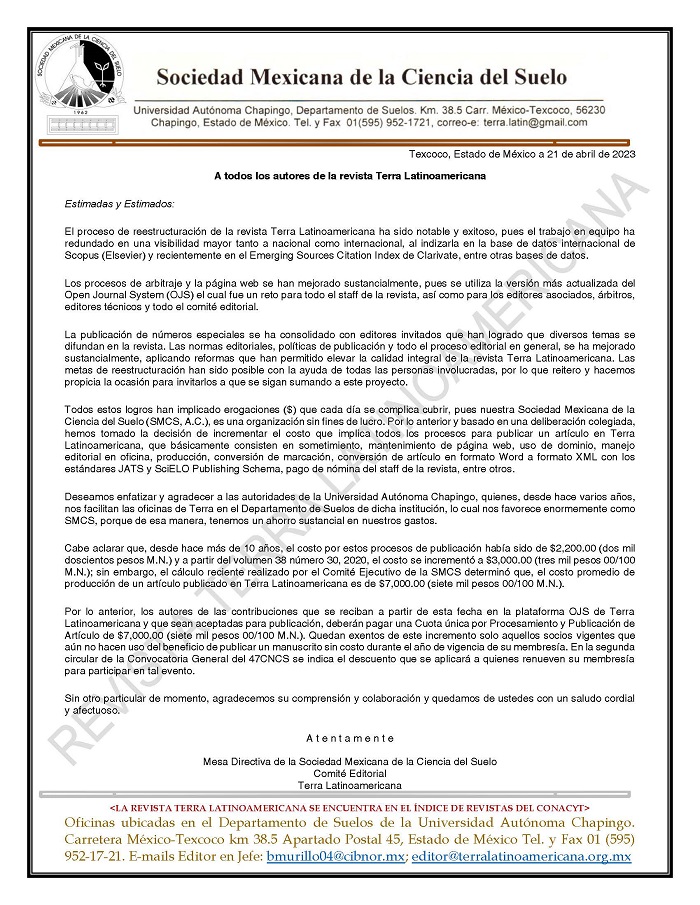Characterization of biofertilizers used in the agricultural valley of Guasave, Sinaloa, Mexico
DOI:
https://doi.org/10.28940/terra.v39i0.859Keywords:
nutrient content, phytotoxicity, safety, phytosanitary management, microorganismsAbstract
The environmental imbalance that chemical fertilizers cause in soils and the need to preserve organic matter for the sustainability and productivity of agricultural systems, has resumed the use of organic fertilizers. The objective of the present study was to determine the physicochemical and microbiological characteristics as indicators of quality in organic fertilizers. The experiment was carried out in a randomized block design, four replications and seven treatments¸ T1: calcium leachate, T2: calcium humus liquid extract, T3: banana humus, T4: concentrated calcium humus, T5: vermicompost, T6: vermicompost liquid extract and control T7: fertilizer of commercial origin (control). (4) The vermicompost, banana humus and commercial fertilizers showed high values of nitrogen and phosphate. The fertilizers had lower pH and electric conductivity (EC) levels than those indicated in NOM-021-RECNAT-2000. The correlation coefficient was positive between EC and nutrients. The commercial fertilizer presented high concentrations of Cr and Pb, without exceeding the maximum permissible limits for the NOM-052-SEMARNAT-2005. As a biological response, lettuce and radish seeds had the lowest GI in banana humus, concentrated calcium humus and commercial fertilizer. The microbiological analyzes showed an absence of the Salmonella indicator and results greater than the maximum allowable limit for use in agriculture in fecal and total coliforms. Organic fertilizers are made with residues of plant, animal or both, some without adequate control, so they become a contamination problem. Due to the increasing demand for organic fertilizers, its study is important since there is no Mexican regulation that defines technical norms to establish quality characteristics in organic fertilizers to be used in agriculture. The physicochemical and biological characteristics vary depending on the material used in the elaboration, since it is a factor that must be considered to obtain a final product that provides available nutrients to the plants.
Downloads
Publication Facts
Reviewer profiles N/A
Author statements
- Academic society
- Terra Latinoamericana
- Publisher
- Mexican Society of Soil Science, C.A.
















